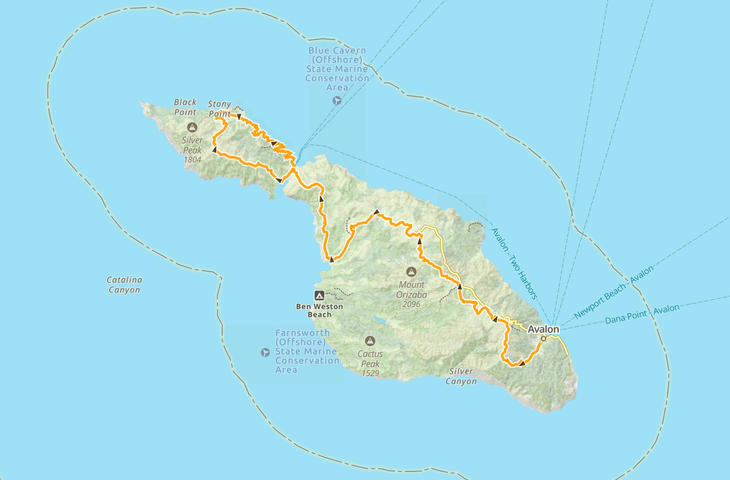


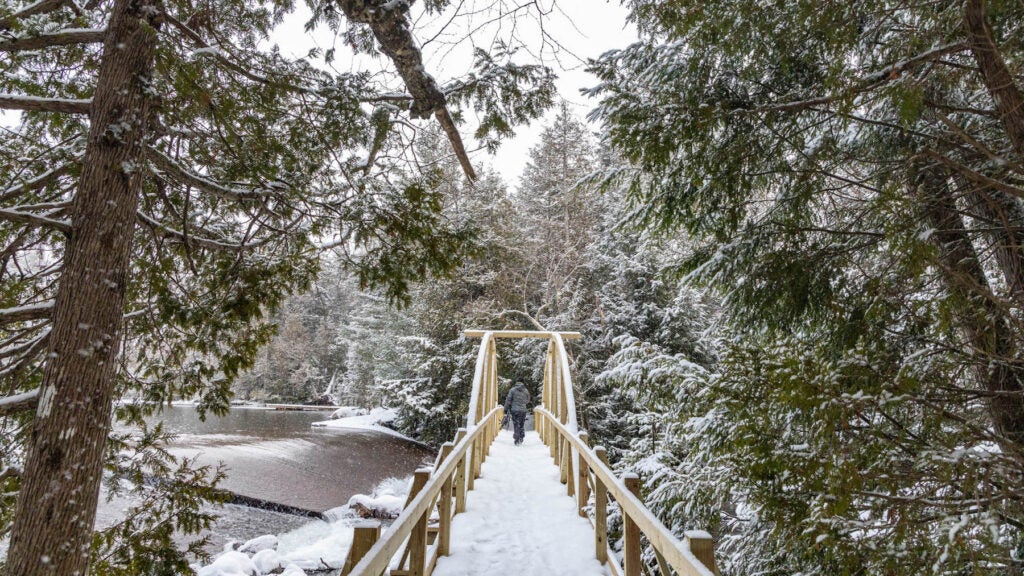
It’s a hiker’s dream: A trail devoid of crowds, where the only sound is the breeze in the Aspen leaves and the melody of a mountain stream, one peppered with views so majestic they steal the breath from your lungs.
What’s not a part of this dream? Sharing this space with hordes of other hikers. But as more and more people are realizing the health, wellness, and meditative benefits that spending time in nature offers, these escapes become harder to find. Fortunately, if you plan your outings wisely, you can still enjoy serenity on trails across the country. Here are some of our favorite spots for picture-perfect solitude.
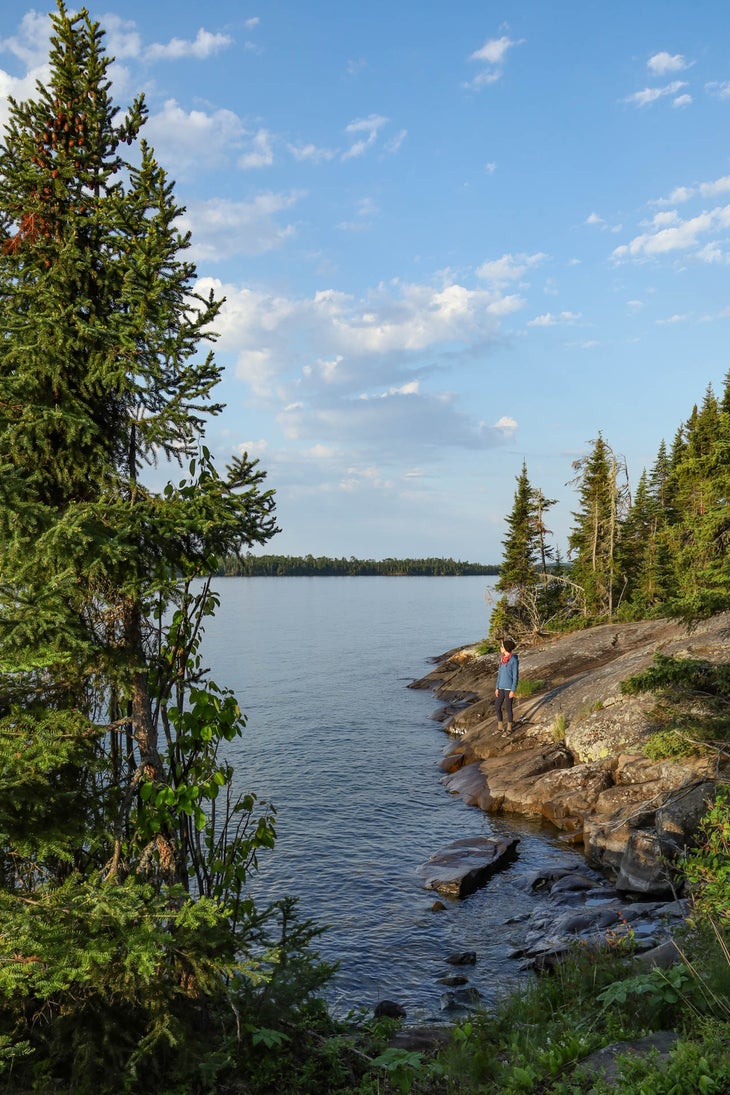
Thanks to the hours-long ferry rides or float planes required to get there and a lack of roads that completely negates the need for a vehicle (it’s hiking, biking, or boats only for visitors), Isle Royale National Park is the least visited national park in the lower 48. This park is a rugged, remote island in Lake Superior between Michigan’s Upper Peninsula, Minnesota and Canada, so visitors here don’t need to worry about traffic, noise, or constantly yielding the trail to let other hikers pass. Once you hike away from the main hub of Rock Harbor (or the less populous Windigo), you may not see another hiker until you arrive at one of the many campgrounds along the network of trails.
Rock Harbor Trail, a forested and rocky path that often runs along the shimmering blue coast of Lake Superior, offers a serene hike and scores of expansive viewpoints. For an extra restful highlight, spend a night at Moskey Basin campground, which features shelters perched on the rocky shore overlooking the lake. Sit back and marvel at the darkest sky you’ve seen in ages as you spot moose and beavers from your camp chair.
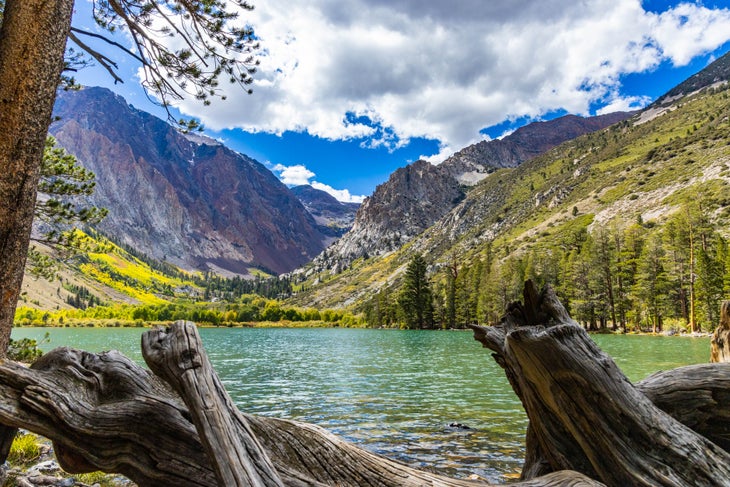
Just 10 or so miles from the scenic Lee Vining and the quirky tufa of Mono Lake, you can find quiet contemplation on this uphill hike with wide views of the snow-dusted Sierra in Mono County. Five miles of narrow, rocky trail surrounded by towering ponderosa pines and vibrant wildflowers lead you up in elevation 646 feet over less than 2 miles, at the end of which awaits Parker Lake in all its mountain-rimmed glory.
Especially on a weekday, you’re unlikely to find more than another car or two in the dirt trailhead parking lot, which means you’ll have the freedom to take your time, sit, meditate, nap, or swim once you arrive at the lake. Just make sure to pack a hammock, towel, sit pad, or all three, because you’ll want to spend more than a few minutes sitting lakeside and marveling at the mountain reflections on the water’s surface.
“Peaceful” may not be the first word that comes to mind when most people think of Rocky Mountain National Park‘s trails—it was in the top 5 most visited national parks in 2022 for a reason. But head to the west entrance instead of the popular east entrance and you’ll find far fewer visitors and far more peace and quiet. Take a hike on the Timber Lake Trail, which meanders through towering pine forests and open meadows and takes you up to sleepy (you guessed it) Timber Lake. There, take a chilly dip, snap a few photos of the surrounding peaks reflected in the lake, or stretch out in the sun and listen to the song of nature surrounded by a few stalwart fellow hikers willing to take the 2,365 feet of elevation gain over approximately 5 miles. Your best chance for finding an uncrowded trailhead is to visit during the week or in the spring or fall, when there are fewer visitors overall.
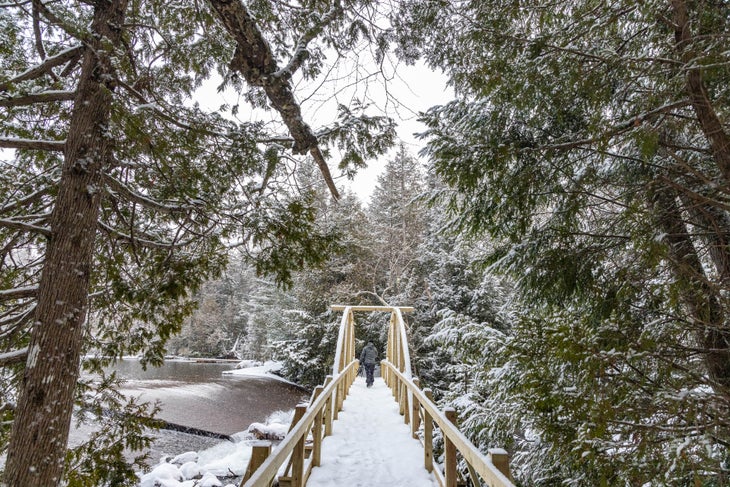
Although the Jackrabbit Trail is open year-round, it’s maybe most serene and magical come wintertime when hikers don snowshoes or cross country skis to brave the chill for deserted lake views. In the winter, a sparkling duvet of snow drapes over the trail, surrounding pine trees and bare deciduous branches. The only other trail users you’re likely to come across are birds darting from one snow-laden branch to the next.
The path meanders through the woods, alongside Lake Placid, and across picture perfect footbridges. Along the way, it connects to a number of other trails, many of which begin or end at lodges. Could you imagine a better way to end your adventure than by kicking off your snowshoes, enjoying a hot toddy by a crackling fireplace? Not us.
While the bustling, touristy port town of Avalon may not inspire relaxation at first glance, it’s the starting point of 38.5 miles of trail that transects the island off the coast of Los Angeles. The Trans-Catalina Trail is perfect for anyone wanting to complete their first thru-hike. This trail is rugged and remote—an hour ferry from the mainland, it offers rolling ridgeline hills with nobody to be seen in all directions—but has access to shops, facilities, and more if you need mid-hike comfort.
The Trans-Catalina Trail is more often populated by bison than by other hikers, especially if you lace up your boots during spring or fall. These bison—a herd introduced decades ago for a movie, then never relocated—and nonstop views of the brilliant turquoise Pacific deep at the base of sheer cliffs are just some of what makes this quick thru-hike so enlightening. Dayhikes are an option, of course, but the real treat may be spending three or four days hiking the entire length of the trail and camping on rocky beaches like Little Harbor Campground, where nature reveals its power in every foamy wave. With your tent pitched on the beach, it’ll be like falling asleep to an IRL white noise machine.
From 2024

